French
English
Pages from the
history of
Arabia Felix
(Yemen)
Location
The Republic of
Yemen lies in
the South of
Arabia (The
Arabian
Peninsula),
south-west of
Asia, between
latitudes 12 and
18 degrees to
the north of the
equator and
surrounded by
water shelves,
bordered by
Saudi Arabia on
the north, the
Indian Ocean on
the south, the
Sultanate of
Oman on the east
and the Red Sea
on the west.
Most of theYemen
lands tend to be
mountainous.
Area
The area of the
Republic of
Yemen is
estimated to be
a million and
half km² which
is the previous
total area of
the two parts of
Yemen, (the
Empty Quarter,
Asir, Najran and
jizan) which has
been
successively
taken by Saudi
Arabia from the
former Arab
Republic of
Yemen in
1926,1933,1934.
There was also
an agreement,
which is related
to this case,
called Altaeef
Agreement which
was signed after
the war between
the two
countries. The
Alsharawrah and
Alwuday’ah
cities were
related to
People’s
Democratic
Republic of
Yemen but in the
end of 1961, the
first one has
been given away
by Britain to
Saudi Arabia
during its
occupation of
the south from
1839 to 1967, to
make a dispute
between the
government that
is going to
leave behind
after its
evacuation and
Saudi Arabia.
The second city
has been
occupied by
Saudi Arabia
after an
unexpected
terrestrial and
aerial attack in
1969. This
attack was not
organized by any
agreement.
Finally,
Aldaywamah
Island was the
last thing that
had been taken
away by Saudi
Arabia in
1998.
On the twelfth
of June 2000
another
agreement has
been signed in
Jeddah between
the two
countries, which
named Jeddah
Agreement)

Population
The population
of the Republic
of Yemen is
about
20,000,000. The
minority of them
are Jewish with
darker tone skin
,because they
have mixed with
orginal people
from Somalia,
Guinea and India
in the past. The
unit of the
Yemen society is
the tripe.
Yemeni people
are Moslems and
are divided into
Shiah whose
people follow
Zaidee belief
relating to Imam
Zaid bin Ali bin
Hussein bin Ali
bin Abee Taleb,
and the Sunnites
whose people
follow the
Shafaiee belief
relating to Imam
Mohammed bin
Edrees
Al-Shafaiee.
Economy
Yemen is an
agricultural
country. The
most famous
product is
coffee, which
was exported
through Macha
port on the Red
Sea. This coffee
used to be
called Mocha
Coffee.
Yemen Products:
Cotton, Corn,
Wheat, Barley,
Fruits and
Vegetables.Yemen
industry:
textiles,
leather, hey,
jewelry, glass
and fishing.
Natural
resources: oil
(It was
discovered in
1984 in the
North by the
American Company
and in the South
in 1986 by the
Russian
Company), salt,
coal, copper,
iron, sulfur,
lead, tin,
silver, gold and
uranium (some
are still
undiscovered)
Districts and
Main Cities
Sana’a is the
political
capital.
Aden is the
commercial and
economical
capital.
Other cities:
Taiz, Lahj,
Marib, Shabwa,
Al-Baidha,
Abyan,
Al-Hodeidah,
Hadramout, Ibb,
Al-Jawf,
Al-Mahara,
Sa’ada,
Al-Mahweet,
Hajjah, Dhamar,
Amran, Aldhale.
The position
that Yemen has
occupied today
has scened a
remarkable
civilization
lasted more than
three thousand
year. Yemen was
inhabited by two
countries (Awsan
and Qataban).
Qataban lies to
east of Aden and
west of
Hadramout. Its
capital was
Tamno. It also
became a
powerful country
four hundred
year BC. In the
first century
BC, it reaches
its glorious
peak. Fifty
years BC, it
started to
produce gold as
a currency. In
the first
century A .D .
it was gone.
Hadramout
state:
First, it
settled at the
volley that is
known with the
same name. Then
it expanded
toward Almahara
coast. Thafar
city was also
part of it.
Maeen state:
It settled in
Al- Jawf area.
Its capital was
Kernao. It
lasted from 50
years B.C. to
115 years B .D.
Sheba state:
This state
lasted from the
9th century B.C.
to 115 years
B.C. it expanded
to include most
of the south of
Arabian
Peninsula. Its
first capital
was Serwah.
Since Mareb had
the authority to
give orders 610
years B.C., it
became the
second capital.
Sheba was famous
by its queen
Belqees.
Hemyar state:
The first one
was settled 115
years B.C., but
the second was
settled 300
years A.D. Its
capital was
Thafar. Maeen
and Sheba
countries, which
were very
powerful, have
also joined to
Hemyar country.
It has been
completely gone
with the falling
of Mareb Dam in
the middle of
the 6th century
A.C.
Period of
Once Yemeni
Government
Although the
16th century
A.C. carried
some of Yemeni
characters in
the Islamic
middle ages, it
differs from all
the others due
to what happened
in this century.
It also affected
the latest
centuries until
now. At the
beginning of
this century,
the Portuguese
found a direct
seaway to India
through Ras
Al-Raja Al-Saleh
and started to
alter the
eastern commerce
through this new
way. For this
reason, the
economic
structure, which
Yemen has known
since its
beginning has
cracked, which
was relied on
beside
prosperous
agriculture to
make Yemeni
people work on
world trade
between the east
and the west.
The disturbance
of economic and
social
structures and
some new
political
situations with
no doubt were
the reasons that
made Yemen in
the 16th century
launch its
modern history.
The old Greeks
have also called
it Arabia Felix.
Location of
Yemen beside its
prosperous
nature and
agriculture was
the main factor
that affects the
Yemen history
through ages.
The prosperous
nature of Yemen
has been very
important to its
location by
making it a
place for
civilization. It
was not only the
location but the
Red Sea was the
road that
carried to the
old world the
first principle
of commercial
and cultural
connection
between the
three old
civilizations
which were
surrounding the
Arabian
Peninsula,
Pharaoh
civilization,
Assyrian and
Babilian
civilizations in
Iraq and
Al-Sanad volley
civilization in
Pakistan. Since
sea road was
very secure and
less expensive,
it became the
best way for
traveling. As a
result, the
connection
between Egypt
and Babel used
to be across the
sea through
Yemeni
merchants. The
most ancient
thing that
connects Egypt
to Yemen was the
expedition that
King Sahor sent
to that country
about 2550 B.C.
The commercial
and civilized
relations
continued until
the Romans
occupied Egypt.
After that, they
cared for
transporting the
Indian commerce
directly from
Egypt without
Yemeni
merchants’ help.
They also were
tough
competitors. The
terrestrial
commerce was in
the Romans’
hands. Romans
navigators was
also afraid
while crossing
Bab Almandab
narrow gate on
the Red Sea or
while anchoring
in some ports.
Because of that,
Romans sent a
powerful
expedition from
Egypt to Yemen
in the
twenty-fourth
years B.C. but
it failed to
accomplish its
mission.
Old Yemenis have
realized the
importance of
prosperous
agriculture in
building an
agricultural
economy in their
country. As a
result, they
built dams to
benefit from
rainwater. The
famous dam was
called Mareb
Dam. They also
have dug many
wells and canals
and were
professionals in
planting
mountains. Its
neighbors
because of its
prosperous
nature and
agriculture
envied Yemen,
especially in
its weak period.
That was
presented when
it was the prey
of the disputes
between two big
old countries
(Bezantah empire
and Persian
empire) in the
east. This
dispute has
disappeared
behind religious
mottos.
It seemed to be
returning some
of what Sheba
had owned in the
late third
century when
Shamar Yahreish
has ruled Sheba
and Thea Redan.
He also extended
his kingdom to
the east and
joined
Hadramout,
Yamamah and
Mecca. The news
of the last
three of Islam
were not certain
but we may say
that the most
important event
that happened in
that time was as
followed:
The spread of
Christianity in
some parts of
Yemen and
Najran, which
was the most
important
center.
After Al-Hemeari
(Abou Nawas)
became Jewish,
he persecuted
the Christian
elements in
Yemen,
especially in
the famous
furrow incident
in 533 A.C.
Bezantah Caesar
pushed Alnajashi
to send a
powerful
expedition to
Yemen to save
Christians.
Abrahah, who was
the leader of
the expedition
to Mecca, was
able to defeat
Abou Nawas group
and settled a
Habashian
country in
Yemen, which
lasted about
half a century.
Bezantian
Persian struggle
hasn’t stopped
by Bezantah
victory so it
extended Persia
to Yemen and got
rid of Bezantian
power that was
represented in
Alhabash rule.
When one of
Hemirian princes
has gone with
Seif Bin Thee
Yezen to destroy
Alhabash rule
with the Persian
king’s big army
help, he
defeated them.
Then Persians
pulled back
leaving Thee
Yezen as a king
in his country
accompanied by a
Persian ruler.
After a period
of time, Islam
spread in Yemen
to make a new
history.
Independent
Yemeni states
Ziadiah state
(818-1019):
The founder of
Ziadiah state
was Mohammed
Ziad, who was
sent by
Al-Abasian
caliph
(Al-Mamoon) to
destroy
Al-Alaween’s
revolution in
Tehamah, was
able to expend
his power to
Jizan and
capturing Aden,
Hadramout and
Alsher in the
east. He headed
to mountains and
captured Sana’a,
Sada and Najran.
Its rulers were
Persians. Its
center was
Zabeed.
Al-Yafariya
state
(840-1003):
Yafer was the
founder of this
country, who was
nominated by
caliph to be in
charge of Sana’a
before he
founded it. The
disputes started
between Yafer
family members
so this weakened
the country to
be destroyed
later.
Ziadian
Emamate state
(898-1962):
Hussein Al-Rasi
from Ras near
Madena
Almonawara was
the founder. The
country center
was Sadah, in
spite of,
Hussein couldn’t
capture the
whole country,
and he made it
popular in Yemen
in 1962.
|
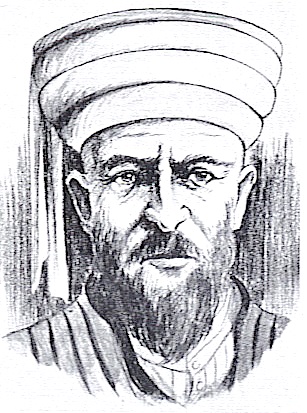 |
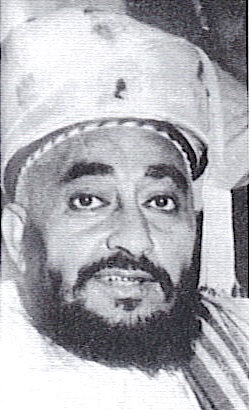 |
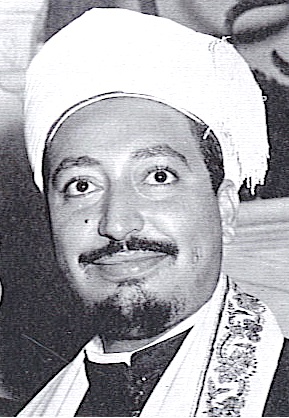 |
|
Imam
(King)
Yehya
Bin
Hameed
Al-Deen
1918
-1948 |
Imam
(King)
Ahmed
Bin
Yehya
Hameed
Al-Deen
1948-1962 |
Imam
(King)
Mohamed
(Al-Badr)
Bin
Ahmed
Hameed
Al-Deen
19-25/09/1962 |
Al-Najahiya
state
(1013-1150):
Najah, who was
originally from
Habash, founded
it on the ruins
of Ziadian
country. The
rulers of the
country were
Al-Ahbash as a
result. Zabeed
was its center,
which was close
to the beach of
the Red Sea
across Habashian
coasts.
Al-Soliehiya
state
(1045-1138):
It was founded
by Ismail
Mohammed
Al-Soliehi, who
was a
propagandist for
Ismailian
belief, was one
of Emam Esmail
Jafer Al-Sadeq
companions, who
secretly
contacted with
Fatimian caliphs
in Egypt
considering them
Emams of
Ismailian
belief. The
country center
was Jeblah. He
was able to
unite Yemen
parts after
destroying small
independent
countries in
Sana’a, Zabeed,
Aljanad, Aden,
Hathramot and
Jezan. This
unification
didn’t continue
except for afew
years. After
that, some
countries have
gained
independence,
which were Zerea
state in Aden,
Al-Hatimiya
state in Sana’a
and Solimaniya
in Jizan.
Ismail’s wife,
“Queen Arwa
AlSoliehi”, has
succeeded him.
The Fatimian
power remains
until Ayobians
have been
destroyed. There
is still an
Ismailian group
in Yemen called
Bamba related to
Najranian Bam
tribes.
Ayobia state
(1174-1229):
There is no
doubt that
extension of
Fatimiya country
to Yemen via
Alsoliehiya
country was one
of the factors
that encouraged
Saleh Aldeen
Alayobi who
destroyed
Fatimiya country
in Egypt and
addressed
Abasian caliph
to send his
troops there.
When princes of
Al-Mekhlaph
Alsolemani asked
him for help in
Jezan against
who didn’t
submit to them,
he sent his
brother Noran
Shah in 1173
with a lot of
skillful troops
who destroyed
independent
countries and
buit Ayobia
country whose
sovereignty was
for Kordians.
Al-Rasoliya
state
(1229-1454):
This country was
founded on the
ruins of Ayobia
country by
Kordians and
Mamaleek
elements that
Ayobians have
brought to
Yemen. This
country also
played an
important role
in Yemen
history. In its
powerful period,
it succeeded to
unite most of
Yemeni regions
under its
control. It also
extended its
power to eastern
African coast
and Mecca in
some places and
commercially
contacted with
other countries
toward China in
the east.
Al-Taheriya
state
(1454-1517):
Bano Taher was
the founder, who
was Rasolians
from Aden and
Lahj. The kings
of the country
tried to unite
Yemen under
their control
but they
couldn’t because
of Ziadian Emans
and some
Mamaleek. Hence
Yemen remained
split between
them until the
period of
Al-Sultan Amr
Abdulwahab
Altaheri who
succeeded to
unite most of
the country
parts under his
control. In his
period of rule,
Aden was the
most commercial
country in the
world but he was
killed near
Sana’a that he
tried to
liberate from
Mamaleek who
settled in
Zabeed.
Al-Sultan
Al-Taheri was
not satisfied by
their existence,
so they brought
him down. This
causes a big
commotion and
disturbances in
Yemen for along
time. Mamaleek
or the member’s
of Sultan Amer
were not able to
control the
situations in
Yemen. This
followed by a
long dispute
between three
powers, Ziadian
leaded by Imam
Sharaf Aldeen
and the rest of
Altaherian
families and
Mamaleek. When
Authmanian came
to Yemen in
1517, Ziadian
power has
extended to most
of Yemen.
Representatives
the Authmanian
power on the
coastal in the
Red Sea, as well
as Altaherian
power in Aden
included
Mamaleek’s
power.
Authmanian
existence:
First existence
in 1538
Second existence
(1571-1635)
Third existence
and the last
(1872-1918)
Authmanians
continued to
control most of
northern parts
of Yemen to be
replaced by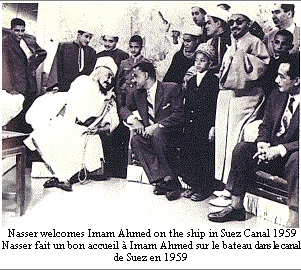 Imamate rule
instead of them.
In 1839, Britain
has occupied the
southern part of
Yemen.
Imamate rule
instead of them.
In 1839, Britain
has occupied the
southern part of
Yemen.
On 26 of
September 1962,
the revolution
has started in
the north
finishing royal
rule. As a
result, 14 of
October 1963
revolution has
began against
British
occupation and
against what was
called Arab
Southern
Emirates
Unification
which included
Aden and
22 Sultanates,
Emirates and
tribes.
All of them were
under British
protection until
30 of November
1967, the day
that
independence has
declared. It was
expected that
British
departure would
cause a whole
united Yemeni
country but the
National Front
that was in
charge has
declared its
independence and
starting a new
Yemeni country
that took the
name of People’s
Democratic
Republic of
Yemen. Its
capital city was
Aden. In the
north, Arab
Republic of
Yemen has
initiated by
making Sana’a
its capital
city. The
authority has
also moved in
that period from
military
leadership that
was newly
supported to
tribal
leadership and
different
military forces
with Egypt.
The southern
leadership has
justified its
refusal of the
Yemen
unification with
the reactionary
flow frown it’s
point of view
which is an
ideological
situation that
find it’s base
in adopting
political
systems in the
south, after
ideological
Leninian
Marxism. While
political system
was heading in
the north toward
more
preservation and
traditionalism
that causes
increasing of
political
conflicts
between the two
parts throughout
30 years ranges
between internal
conflict and
international
partial conflict
with the
statement “ two
wars have broken
out in 1972 and
1979), the rule
sequenced by ten
presidents five
in each part.
Unification
Steps
(Indications and
Results)
In October 1972,
at the first
meeting in Cairo
between Muhssein
Al-Eni in the
north and Ali
Nasser Mohammed
in the south,
followed by the
first Summit
meeting between
the president of
the two parts,
judge
Abdulrahman Al-
Eryani and Salem
Rabaae in the
capital city of
Libya “Trablos-
Tripoli”,
sponsored by
Libyan
president,
colonel Moammar
Al Qadhafi, the
constitution of
the united
country of Yemen
has been agreed
on. After this
date, several
meetings were
held in Yemen as
follows:
-Taiz,
Al-Hodeidah in
10, 12/10/1973
by Al- Eryani
and Rabaae.
-Qatobah, a
country located
in Ibb region
north, near the
southern borders
or what used to
be called
Al-Atraf in
15/12/1977 by
Ibrahim Al-Hamdi
and Salem
Rabaae. It has
been agreed on
forming the
Yemeni Higher
Council under
their headship,
Ministers of
Foreign Affairs
membership,
Ministers of
Defense and
Ministers of
Economy who
should
alternately meet
every six-month
in the capital
cities of the
two parts.
-Sana’a in
15/8/1977 by
Al-Hamdi and
Rabaae
-Sana’a in 02,
04/10/1979 by
Ali Abdulah
Saleh and Ali
Nasser Mohammed,
the prime
minister on
behalf of
Abdulfatah
Ismail who never
visited the
north.
-Aden in
03/11/1981 and
02/12/1981 by
Nasser and
Saleh, which was
the first visit
for a northern
president to the
south. Its
importance
existed in
activating the
Yemeni Higher
Council. Its
meetings were
accurately
arranged until
the events of
13/01/1986 to be
stopped for a
little while.
After the
success of
Yemeni summit
meeting that was
held in late
1986 in the
capital city of
Libya between
the president
Ali Saleh and
Haedar Al-Attas
sponsored by
Al-Qathafi. The
unionism journey
has recovered
and started its
first step again
in the
leadership in
the north and
the new
leadership in
the south
presented by Ali
Salem Al-Beidh
the
general-secretary
of socialist’s
party in several
numbers of
Yemeni regions
from 1987 to
1990. In other
Arab capital
cities it was as
followed:
|
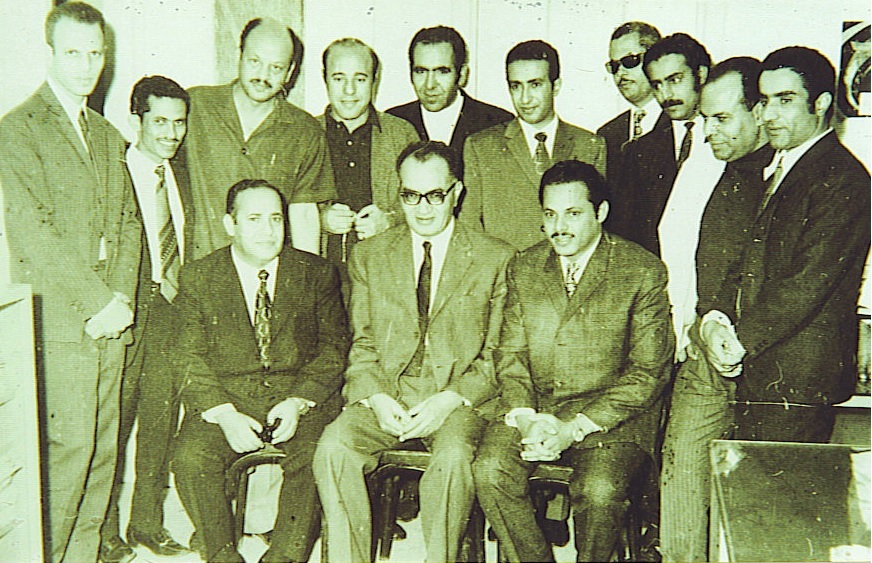 |
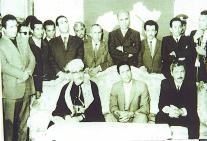 |
 |
|
Nasser
-
Al-Eni
(Cairo
1972)
|
The
first
Yemeni
summit
in
Tripoli
in
1972
from
the
right:
Robaae
-
Qathafi
-
Eryani
and
Ibrahim
Al-Hamdi
The
first
stand
at
the
left
end.
|
Al-Hamdi
-Robaae
(Qatobah
1977)
|
|
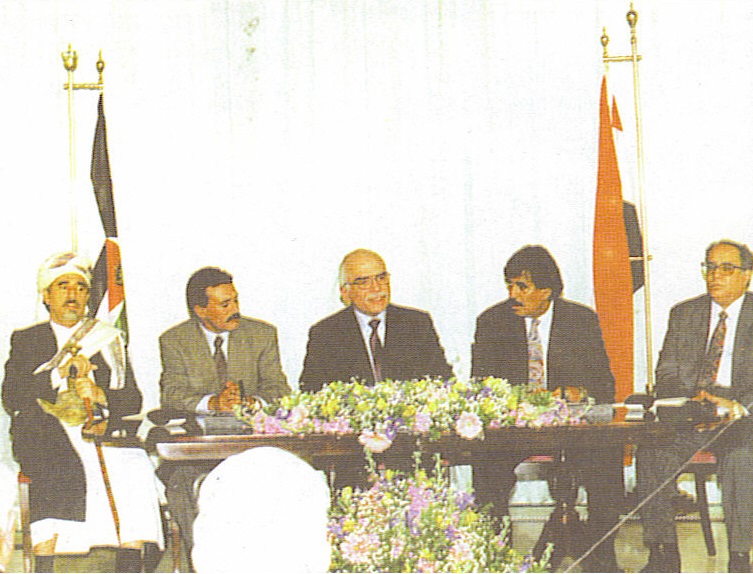 |
 |
|
The
conciliation
meeting
in
Amman
in
94
from
the
right:
Al-Attas
-
Al-Beidh
-
King
Hussein
-
Saleh
-Al
-Ahmar.
|
Al-
Beidh-Saleh |
-Algeria in
4/9/1973 by
Al-Ereani and
Rabaae sponsored
by the president
Hawari boumedien
The prince of
Kuwait Jaber
Al-Sobah
sponsored
al-Kuwait in
28/3/1979 by
Ismail and
Saleh. Including
so many meetings
on the national
and Arabic list,
the most
important one
was the meeting
that was held in
Aden in 30 of
November 1989
between Saleh
and Al-Beidh
which the
constitution of
United Yemen
plan has been
signed.
The reason that
Yemeni
leadership has
chosen such a
date came as a
compensation for
what happened
before 23 years
ago. The joy
that Yemenis had
due to the
independence of
the south, has
been gone
because of the
beginning of
Sana’a blockade,
which continued
for 70 days by
besieging
revolution to
destroy the
Republic system
in the north. At
noon on Tuesday
the 22nd of May
1990, it has
been announced
from Aden the
reunification of
two parts of
Yemen under the
name of Republic
of Yemen.
Al-Beidh, the
former
general-secretary
of socialist’s
party, who is
staying in Oman
since July 1994
after he has
failed to
reinstate
himself as the
Vice-President
as he used to be
before
unification. As
the
general-secretary
of General
Public Party has
become the
president, Yemen
started a
totally new
phase. It’s
aimed to
encourage
democracy and
multi-politics.
The parties have
reached more
than 40 parties
that form the
political map in
Yemen today.
They are as
followed:
General People’s
Congress –
Yemeni
Socialist’s
Party – Yemeni
Islah Party
(Islamic) -
National Arab
Socialist Baath
Party (in Iraq)
divided into two
parts – (Truth
Party) (Al-Haqq)
and Baath Party
(in Syria) -
Nasserite Popl
Unionist
Organization -
Democratic
Nasserites -
Nasserite
Correction
Organization -
League of the
Sons of Yemen
(leaded by
Abdulrahman
Al-Jafri) -
League of the
Sons of Yemen
(out of Al-Jafri
authority) -
Nasserite
Unionist Party –
Nasserite
Al-Soqoor
Organization -
Unionist
Assembly -
September
Democrats -
National
Democratic Front
- Liberation
Front - National
Front Popular
Organization -
People's Forces
Union – Unionism
Forces Front –
Unification and
Islamic Work
Organization –
Al-Manbar Party
– Republic Party
– Islamic Forces
Union – National
Arab Union Party
- National
Cohesion
Conference –
Yemeni Advanced
People’s
Organization –
Social
Nationalist
Party – Allah’s
Party –
consultation
Party – Yemeni
Fronts
Organization –
Peace (Al-Salam)
Party – Yemeni
Revolution Party
– Liberated
Migrants Party –
Nasserite
Revolutionary
Leadership –
Islamic
Democratic
Movement –
Nasserite Arab
Islamic
Organization –
Yemeni Qatanab
Organization –
Revolutionary
Correction Front
– Liberation
Front Party –
Nasserite
Stationed
Organization –
Yemeni Reform
Party –
Revolutionary
Democratic Party
– Democratic
Front– green
party.
Resources:
Al-Rasheed for
Yemeni Geography
by Hussein
Aldhamari.
The first
Authmanian
unclosing in
Yemen
(1538-1635) by
Dr. Saeed
Mostafa.
Modren
&Contemporary
History of Yemen
(1516 - 1918) by
Dr. Hussein
Al-Amri.
Althwabet
Journal released
by General
People’s
Congress.
Political
Researches
released by
Yemeni Foreign
Ministry.
26 September
Journal released
by Political
Guidance
Administration
that belonged to
Military Forces.
Al-Watheqa
Journal –
Alwhdawee
Journal-
Althawra Journal
– Al-Thawri
Journal –
Al-Sahwa
Journal.
Saudi Expanded
Greed in Yemen
by Dr. Mohammed
Al-shehari.
Politics
Encyclopedia by
Dr. Abdulwahab
Al-Kaeali.
Yemeni Union in
the present and
future by Khaled
Al-Qasemi.
Yemen News
Agency (Saba)
Politics for
Asking and
Answering
Program
broadcasted by
London Radio.
Nawafeth
Journal.
Emirates of
Southren Yemen
1937-1947 (1989)
by Najeeb Saeed
Abu Azzdeen
Five
Nationalities
and One Homeland
by Talat Yaqoob
Al-Gaseen.
Belqees The
Woman of Puzzles
and Devil of
Gender by Ziad
Meni.
Yemen after
Union by Aedah
Saree Aldeen.
Old Yemen
History Book for
the sixth grade.
Jacques Herbert
Yemen (He is a
former Canadian
Senator)
The Ancient Land
of The Queen of
Sheba.
A book
(published by
Yemen Embassy in
the capital city
of Canada
(Ottawa) In
January 1996.
|